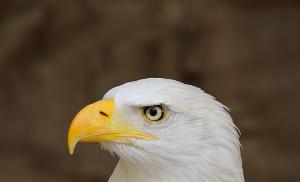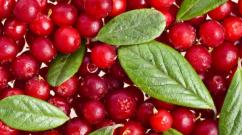Unusual animals of our planet. Presentation "interesting animals of the world" Download presentation the most amazing animals
Slide 2
Blob fish
Slide 3
The blobfish lives in deep water off the coast of Tasmania and Australia. The pressure at such depths is so great that the blob fish is saved only by the gel-like composition of the body, which has a lower density than water. This composition helps this fish, about 65 cm long, to swim with low energy consumption. Due to the blob fish's lack of muscles, it has to feed on living creatures that swim past it. It also lacks a swim bladder, due to its non-functionality at the depths at which this fish lives.
Slide 4
Yeti crab
Slide 5
The yeti crab, or fluffy kiva, was discovered relatively recently near Easter Island near the outlet of thermal waters. Because of the significant differences between the crab found and other known crustaceans, scientists created a separate family for this animal, Kiwaidae. The yeti crab has strange "hairy" claws.
Slide 6
Octopus Dumbo
Slide 7
The octopus Dambooctopus lives in the Tasmanian Sea at a depth of about 400 meters. This octopus is no more than 10 cm in size. Its distinctive feature is a pair of long, flat fins that look like ears. Hence the name of this animal “Dumbo” (Dumbo the elephant). The individual tentacles of an octopus are connected to each other by a flexible membrane - the umbrella. It, with the assistance of fins, is the driving force of the animal.
Slide 8
Sea Dragon
Slide 9
The leafy sea dragon, or ragdragon, looks like a strange seahorse. It lives in the coastal waters of Australia, in shallow waters. The processes all over the sea dragon's body create an ideal camouflage for it. In this case, the outgrowths are not fins. The rag picker, with its unusual appearance, has earned the honor of being the official emblem of the state of South Australia.
Slide 10
Leaf-like gecko
Slide 11
The leaf-like gecko camouflages itself, as its name suggests, under the foliage of trees. This unusual lizard lives in the forests of Madagascar. Leaf-like geckos became known about 230 years ago, and in 2004 the WWF (World Wildlife Fund) listed them as Most Endangered. Due to their interesting appearance, they have become desirable pets for people, so they are caught in large quantities for sale.
Slide 12
Peacock grasshopper
Slide 13
The peacock grasshopper is a bizarre insect. This relatively large grasshopper employs two defensive tactics. Mostly it disguises itself as a dry leaf, but when it is noticed, it spreads its colored wings, the pattern on which imitates huge eyes. This defense tactic misleads the enemy and often saves the grasshopper’s life.
Slide 14
Tiger ant
Slide 15
The tiger ant not only has an unusual coloring, similar to a tiger, but also has a huge size for ants (3 cm). Moreover, he is the most primitive ant in the world. These insects were found in Papua New Guinea in 2009, so this species has not yet been studied much. Who knows, maybe they will surprise the whole world.
Slide 16
Maned wolf
Slide 17
The maned wolf looks similar to a fox, but the relationship with them has been refuted by scientists. The maned wolf with its long thin limbs looks a little strange. This feature is believed to be related to the habitat. These wolves live on plains with tall grass, and this length of limbs helps them rise above the plants and survey the area.
Slide 1
Jaboticaba is a tree on which berries grow. The Brazilian grape tree is a plant of the Myrtaceae family, growing in tropical latitudes, and cultivated there as a fruit crop. The fruits of this tree grow directly on the trunk and main branches, which gives it such an unusual appearance.Slide 2

Slide 3
 Did you know that... Goshawks are not found in just one European country - Iceland. Chameleons can throw out their tongue a distance equal to half the length of their body. In addition, its eyes are able to rotate independently of each other, so the chameleon can look in all directions at the same time without moving its head. The electric generators of the South American electric eel can generate voltages of up to 1200 volts at a current of 1.2 A. This is enough to light six hundred-watt light bulbs. In order for an ostrich egg to be hard-boiled, it must be boiled for at least 40 minutes. Ferrets sleep up to 20 hours a day.
Did you know that... Goshawks are not found in just one European country - Iceland. Chameleons can throw out their tongue a distance equal to half the length of their body. In addition, its eyes are able to rotate independently of each other, so the chameleon can look in all directions at the same time without moving its head. The electric generators of the South American electric eel can generate voltages of up to 1200 volts at a current of 1.2 A. This is enough to light six hundred-watt light bulbs. In order for an ostrich egg to be hard-boiled, it must be boiled for at least 40 minutes. Ferrets sleep up to 20 hours a day.
Slide 4
 Tree growing from the roof of the courthouse tower The city of Greensburg (USA) is known as the “City of Trees” because of the more than a dozen trees that have been growing from the roof of the county courthouse since 1870. They are believed to have sprouted from seeds contained in bird droppings.
Tree growing from the roof of the courthouse tower The city of Greensburg (USA) is known as the “City of Trees” because of the more than a dozen trees that have been growing from the roof of the county courthouse since 1870. They are believed to have sprouted from seeds contained in bird droppings.
Slide 5
 A tree that “shoots” seeds at a speed of 70 m/s Exploding hura (dynamite tree) is a species of evergreen shrub growing in South America. It grows up to 60 m in height. This tree is noticeable in the dark thanks to the pointed thorns on the smooth brown bark. These spines are a natural defense mechanism against animals.
A tree that “shoots” seeds at a speed of 70 m/s Exploding hura (dynamite tree) is a species of evergreen shrub growing in South America. It grows up to 60 m in height. This tree is noticeable in the dark thanks to the pointed thorns on the smooth brown bark. These spines are a natural defense mechanism against animals.
Slide 6
 Chicken-flavored mushroom Sulfur-yellow tinder fungus is one of the types of edible mushrooms. It is also known as "witch's brimstone", "kulyna" or "chicken mushroom" because it tastes like chicken. These mushrooms usually grow in whole clusters, and the width of its cap can reach 40 cm.
Chicken-flavored mushroom Sulfur-yellow tinder fungus is one of the types of edible mushrooms. It is also known as "witch's brimstone", "kulyna" or "chicken mushroom" because it tastes like chicken. These mushrooms usually grow in whole clusters, and the width of its cap can reach 40 cm.
Slide 7
 The Flower That Smells Like Chocolate This is a plant from Mexico with maroon flowers. These flowers exude a delicious chocolate aroma. The plant has no edible parts, cannot produce viable seeds, and reproduces by division by tubers. Therefore, chocolate flowers are not cultivated, and they grow only in their homeland in Mexico.
The Flower That Smells Like Chocolate This is a plant from Mexico with maroon flowers. These flowers exude a delicious chocolate aroma. The plant has no edible parts, cannot produce viable seeds, and reproduces by division by tubers. Therefore, chocolate flowers are not cultivated, and they grow only in their homeland in Mexico.
Slide 8
 Tradescantia. David Latimer and his Tradescantia - a plant that he planted in a bottle 40 years ago, capped it and never opened it. An ecosystem has formed in the bottle in which the plant takes care of itself, produces oxygen and feeds on humus.
Tradescantia. David Latimer and his Tradescantia - a plant that he planted in a bottle 40 years ago, capped it and never opened it. An ecosystem has formed in the bottle in which the plant takes care of itself, produces oxygen and feeds on humus.
Slide 9
 The largest inflorescence in the world. There is a plant (not a flower), but an inflorescence, and it is much larger in size than Rafflesia (the largest flower in the world) - this is Amorphophallus titanica (Titan arum). The largest representative of this genus bloomed in the botanical garden of Basel, Switzerland.
The largest inflorescence in the world. There is a plant (not a flower), but an inflorescence, and it is much larger in size than Rafflesia (the largest flower in the world) - this is Amorphophallus titanica (Titan arum). The largest representative of this genus bloomed in the botanical garden of Basel, Switzerland.
Slide 10
 Jade vine. The jade vine is famous for its impressive blue-green claw-shaped flowers. The flower is pollinated by bats, who love to drink its nectar. Due to climate change and systematic cutting down of the natural habitat of such rare flowers, the jade vine is in danger of extinction.
Jade vine. The jade vine is famous for its impressive blue-green claw-shaped flowers. The flower is pollinated by bats, who love to drink its nectar. Due to climate change and systematic cutting down of the natural habitat of such rare flowers, the jade vine is in danger of extinction.
Slide 11
 The most expensive flower on the planet. Orchid "Gold of Kinabalu" It can only be found on the islands of Borneo. One golden orchid shoot costs about $5,000. This rare plant blooms only after its fifteenth birthday, and it can be identified by its almost horizontal petals. There are up to six large fragrant flowers on one plant. Flowering of the “gold of Kinabalu” begins in April-May
The most expensive flower on the planet. Orchid "Gold of Kinabalu" It can only be found on the islands of Borneo. One golden orchid shoot costs about $5,000. This rare plant blooms only after its fifteenth birthday, and it can be identified by its almost horizontal petals. There are up to six large fragrant flowers on one plant. Flowering of the “gold of Kinabalu” begins in April-May
Slide 12
 A plant that can digest a rat along with its teeth and bones There is a carnivorous plant so large that it literally swallows mice and rats and even digests their teeth and bones. The plant is part of the insectivorous plant family - it is a killer plant that can be found on the islands of Java and Sumatra.
A plant that can digest a rat along with its teeth and bones There is a carnivorous plant so large that it literally swallows mice and rats and even digests their teeth and bones. The plant is part of the insectivorous plant family - it is a killer plant that can be found on the islands of Java and Sumatra.
Slide 13
 Rainbow tree from the Philippines Rainbow eucalyptus is native to the Philippine island of Mindanao. The tree is famous for the colorfulness of its bark, hence the name. Like other eucalyptus trees, the bark of this tree tends to peel off (usually in narrow strips).
Rainbow tree from the Philippines Rainbow eucalyptus is native to the Philippine island of Mindanao. The tree is famous for the colorfulness of its bark, hence the name. Like other eucalyptus trees, the bark of this tree tends to peel off (usually in narrow strips).
Slide 14
 Flower parade. On September 1 and 2, the Dutch city of Zundert hosted guests and participants in one of the largest flower parades in the world. Thousands of tourists from around the world came to see the giant flower sculptures.
Flower parade. On September 1 and 2, the Dutch city of Zundert hosted guests and participants in one of the largest flower parades in the world. Thousands of tourists from around the world came to see the giant flower sculptures.
Slide 15
 Exhibition of giant vegetables. Giant vegetables were on display at the Harrowgate Farmers' Festival. Here you could see everything - from mushrooms to a huge pumpkin. Gardener Phillip Vowels with his son Andrew and a 51kg squash.
Exhibition of giant vegetables. Giant vegetables were on display at the Harrowgate Farmers' Festival. Here you could see everything - from mushrooms to a huge pumpkin. Gardener Phillip Vowels with his son Andrew and a 51kg squash.
Slide 16
 The oldest living organism on the planet. This pine tree is 4843 years old. She grew from a seed that fell to earth in 2832 BC
The oldest living organism on the planet. This pine tree is 4843 years old. She grew from a seed that fell to earth in 2832 BC
Slide 17
 Baboon. A yellowish-colored monkey whose main habitats are the steppe and mountainous regions of Central and Eastern Africa. Despite their size, which can reach up to 75 cm, and their rather clumsy appearance, baboons have great dexterity and move quickly.
Baboon. A yellowish-colored monkey whose main habitats are the steppe and mountainous regions of Central and Eastern Africa. Despite their size, which can reach up to 75 cm, and their rather clumsy appearance, baboons have great dexterity and move quickly.
Slide 18
 Grain-tailed monkey. The family of prehensile-tailed monkeys includes a large number of species of broad-nosed monkeys living in South America. All representatives of this family live in trees and have a characteristic prehensile tail, with which they can cling to branches and jump to neighboring trees.
Grain-tailed monkey. The family of prehensile-tailed monkeys includes a large number of species of broad-nosed monkeys living in South America. All representatives of this family live in trees and have a characteristic prehensile tail, with which they can cling to branches and jump to neighboring trees.
Slide 19
 Tiger. The largest representative of the cat family and one of the largest predators on earth, after the brown and polar bear. The tiger's habitat is Asia, but the barbaric extermination of these animals has led to the fact that now the tiger can be found only in some areas of India, Indochina and the Far East.
Tiger. The largest representative of the cat family and one of the largest predators on earth, after the brown and polar bear. The tiger's habitat is Asia, but the barbaric extermination of these animals has led to the fact that now the tiger can be found only in some areas of India, Indochina and the Far East.
Slide 20
 Jaguar. One of the largest predatory mammals with a muscular body, a rounded head, thick short hair and a long tail. All jaguars have a coloring consisting of a dirty yellow background and black solid or ring-shaped spots. You can meet a jaguar in tropical forests, high in the mountains, on the ocean coast, where he digs up turtle eggs.
Jaguar. One of the largest predatory mammals with a muscular body, a rounded head, thick short hair and a long tail. All jaguars have a coloring consisting of a dirty yellow background and black solid or ring-shaped spots. You can meet a jaguar in tropical forests, high in the mountains, on the ocean coast, where he digs up turtle eggs.
Slide 21
 Zebra. A characteristic feature of all types of zebras are black stripes on the body, which serve as good camouflage from predators and tsetse flies, which do not perceive such coloring. Today, the zebra can only be found in Africa, in the savannas, semi-deserts and mountains of which all three species of these animals live.
Zebra. A characteristic feature of all types of zebras are black stripes on the body, which serve as good camouflage from predators and tsetse flies, which do not perceive such coloring. Today, the zebra can only be found in Africa, in the savannas, semi-deserts and mountains of which all three species of these animals live.
Slide 22
 Iguana. Large lizards, well adapted to life in dry climates. Iguanas mainly live in Central America, on the Fiji Islands, Antilles and Galapagos Islands. Characteristic features of all representatives of this family are teeth, which are absent in all other lizards.
Iguana. Large lizards, well adapted to life in dry climates. Iguanas mainly live in Central America, on the Fiji Islands, Antilles and Galapagos Islands. Characteristic features of all representatives of this family are teeth, which are absent in all other lizards.
Slide 23
 Skunk. Medium mammal. Two species of skunks, whose fur is very thick but coarse, have a very contrasting coloration consisting of a combination of black and white stripes or spots, a thick black and white tail and the ability to scare away their enemies with the help of a very unpleasant odor released by animals in case of danger .
Skunk. Medium mammal. Two species of skunks, whose fur is very thick but coarse, have a very contrasting coloration consisting of a combination of black and white stripes or spots, a thick black and white tail and the ability to scare away their enemies with the help of a very unpleasant odor released by animals in case of danger .
Slide 24
 Amazonian dolphin. A mammal from the order of cetaceans, the main habitats of which are the Amazon and its tributaries. The full body of Amazonian dolphins, the length of which can reach up to 2.5 meters and the weight of 200 - 210 kilograms, has a pale blue color, darker in dolphins living in lakes.
Amazonian dolphin. A mammal from the order of cetaceans, the main habitats of which are the Amazon and its tributaries. The full body of Amazonian dolphins, the length of which can reach up to 2.5 meters and the weight of 200 - 210 kilograms, has a pale blue color, darker in dolphins living in lakes.
Slide 25
 Slithertooth. A mammal from the order of insectivores. The animal is relatively large compared to other types of insectivores: its length is 32 centimeters, its tail is on average 25 cm, the weight of the animal is about 1 kilogram, and its body is dense.
Slithertooth. A mammal from the order of insectivores. The animal is relatively large compared to other types of insectivores: its length is 32 centimeters, its tail is on average 25 cm, the weight of the animal is about 1 kilogram, and its body is dense.
Slide 26
 Echidna. Prochidna weighs up to 10 kg, although larger specimens have also been noted. The length of the body reaches 77 cm. Compared to the echidna: the legs of the echidna are higher, the claws are more powerful. Another feature of the echidna’s appearance is the spurs on the hind legs of males and the five-fingered hind limbs and three-fingered forelimbs.
Echidna. Prochidna weighs up to 10 kg, although larger specimens have also been noted. The length of the body reaches 77 cm. Compared to the echidna: the legs of the echidna are higher, the claws are more powerful. Another feature of the echidna’s appearance is the spurs on the hind legs of males and the five-fingered hind limbs and three-fingered forelimbs.
Slide 27
 Capybara. Semi-aquatic mammal, the largest of modern rodents. It is the only representative of the capybara family. There is a dwarf variety, sometimes it is considered as a separate species (lesser capybara).
Capybara. Semi-aquatic mammal, the largest of modern rodents. It is the only representative of the capybara family. There is a dwarf variety, sometimes it is considered as a separate species (lesser capybara).
Slide 28
 Tasmanian devil. The largest of modern predatory marsupials, with a huge mouth and sharp teeth. He has a thick build and a stern disposition, for which he was called the devil. Emitting ominous screams at night, the massive and clumsy Tasmanian devil looks like a small bear: the front legs are slightly longer than the hind legs, the head is large, and the muzzle is blunt. Did you know that... Jackals have one more pair of chromosomes than dogs and wolves. Tigers not only have striped fur, but also striped skin. The gar fish has green bones. The octopus has a rectangular pupil. A horse has 18 more bones than a human. Giraffes have the largest heart and the highest blood pressure of any land animal. Giraffes have a completely black tongue, the length of which can reach up to 45 cm. The heart of a whale beats only 9 times per minute. The penguin is the only bird that can swim but cannot fly. In addition, it is the only bird that walks standing.
Tasmanian devil. The largest of modern predatory marsupials, with a huge mouth and sharp teeth. He has a thick build and a stern disposition, for which he was called the devil. Emitting ominous screams at night, the massive and clumsy Tasmanian devil looks like a small bear: the front legs are slightly longer than the hind legs, the head is large, and the muzzle is blunt. Did you know that... Jackals have one more pair of chromosomes than dogs and wolves. Tigers not only have striped fur, but also striped skin. The gar fish has green bones. The octopus has a rectangular pupil. A horse has 18 more bones than a human. Giraffes have the largest heart and the highest blood pressure of any land animal. Giraffes have a completely black tongue, the length of which can reach up to 45 cm. The heart of a whale beats only 9 times per minute. The penguin is the only bird that can swim but cannot fly. In addition, it is the only bird that walks standing. Slide 31
 Did you know that... An iguana can stay underwater for up to 28 minutes. A zebra is white with black stripes, not the other way around. There are approximately 500 zoos in the world. The caterpillar's body has more muscles than the human body. A rat can go without water longer than a camel. A tit feeds its chicks a thousand times per day. The female armadillo has a unique ability. In stressful situations, it can delay childbirth for up to two years. When attacking their prey, sharks close their eyes so that the struggling prey does not injure them. A skunk cannot bite and smell at the same time.
Did you know that... An iguana can stay underwater for up to 28 minutes. A zebra is white with black stripes, not the other way around. There are approximately 500 zoos in the world. The caterpillar's body has more muscles than the human body. A rat can go without water longer than a camel. A tit feeds its chicks a thousand times per day. The female armadillo has a unique ability. In stressful situations, it can delay childbirth for up to two years. When attacking their prey, sharks close their eyes so that the struggling prey does not injure them. A skunk cannot bite and smell at the same time.
Slide 32
 Internet resources. Interesting facts about animals http://www.theanimalworld.ru/birds/facts/ Giraffe http://www.theanimalworld.ru/animals/zhiraf.html Iguana http://www.theanimalworld.ru/animals/iguana.html Zebra http://www.theanimalworld.ru/animals/zebra.html Jaguar http://www.theanimalworld.ru/animals/jaguar.html Tiger http://www.theanimalworld.ru/animals/tigr.html Grain-tailed monkey http://www.theanimalworld.ru/animals/tsepkokhvostaja_obezjana.html Baboon http://www.theanimalworld.ru/animals/babuin_2.html Skunk http://images.yandex.ru/yandsearch?source=wiz&text=%D1 %81%D0%BA%D1%83%D0%BD%D1%81%20%D1%84%D0%BE%D1%82%D0%BE&noreask=1&pos=7&rpt=simage&lr=39&uinfo=sw-1007-sh -677-fw-782-fh-471-pd-1&img_url=http%3A%2F%2Fcs5577.userapi.com%2Fv5577778%2F11e%2FOptEPZ4S5U0.jpg Iguana http://images.yandex.ru/yandsearch?text=% D0%B8%D0%B3%D1%83%D0%B0%D0%BD%D0%B0%20%D1%84%D0%BE%D1%82%D0%BE&pos=1&rpt=simage&lr=39&noreask=1&source= wiz&uinfo=sw-1007-sh-677-fw-782-fh-471-pd-1&img_url=http%3A%2F%2Fshkolazhizni.ru%2Fimg%2Fcontent%2Fi60%2F60744.jpg Shchelezub http://invisibleon.ru/ 3446 Tarsier http://dolgopyat.ru/o-dolgopatah/philipinskii-dolgopya/ Animated pictures of plants biology teacher website http://tana.ucoz.ru/load/116 Animated pictures of animals http://bestgif.su/photo/ zhivotnye/7 Animated picture Tree http://vsyaanimaciya.ru/photo/55-0-4726 Animated picture Frog Princess http://www.o-prirode.com/photo/43-0-4206 Template “Ladybug” http //lotoskay.ucoz.ru/load/shablony_dlja_prezentacij/zhivotnye/bozhja_korovka/146-1-0-3305 Interesting facts about plants http://www.billionnews.ru/flower/
Internet resources. Interesting facts about animals http://www.theanimalworld.ru/birds/facts/ Giraffe http://www.theanimalworld.ru/animals/zhiraf.html Iguana http://www.theanimalworld.ru/animals/iguana.html Zebra http://www.theanimalworld.ru/animals/zebra.html Jaguar http://www.theanimalworld.ru/animals/jaguar.html Tiger http://www.theanimalworld.ru/animals/tigr.html Grain-tailed monkey http://www.theanimalworld.ru/animals/tsepkokhvostaja_obezjana.html Baboon http://www.theanimalworld.ru/animals/babuin_2.html Skunk http://images.yandex.ru/yandsearch?source=wiz&text=%D1 %81%D0%BA%D1%83%D0%BD%D1%81%20%D1%84%D0%BE%D1%82%D0%BE&noreask=1&pos=7&rpt=simage&lr=39&uinfo=sw-1007-sh -677-fw-782-fh-471-pd-1&img_url=http%3A%2F%2Fcs5577.userapi.com%2Fv5577778%2F11e%2FOptEPZ4S5U0.jpg Iguana http://images.yandex.ru/yandsearch?text=% D0%B8%D0%B3%D1%83%D0%B0%D0%BD%D0%B0%20%D1%84%D0%BE%D1%82%D0%BE&pos=1&rpt=simage&lr=39&noreask=1&source= wiz&uinfo=sw-1007-sh-677-fw-782-fh-471-pd-1&img_url=http%3A%2F%2Fshkolazhizni.ru%2Fimg%2Fcontent%2Fi60%2F60744.jpg Shchelezub http://invisibleon.ru/ 3446 Tarsier http://dolgopyat.ru/o-dolgopatah/philipinskii-dolgopya/ Animated pictures of plants biology teacher website http://tana.ucoz.ru/load/116 Animated pictures of animals http://bestgif.su/photo/ zhivotnye/7 Animated picture Tree http://vsyaanimaciya.ru/photo/55-0-4726 Animated picture Frog Princess http://www.o-prirode.com/photo/43-0-4206 Template “Ladybug” http //lotoskay.ucoz.ru/load/shablony_dlja_prezentacij/zhivotnye/bozhja_korovka/146-1-0-3305 Interesting facts about plants http://www.billionnews.ru/flower/
Slide 33

Slide 34

Natalia Nekrasova
Presentation “Amazing Animals”
Chameleon - unique animal. He is able to change color. Few Togo: One side of a chameleon might be bright red, for example, and the other green. By changing color, the chameleon merges with surrounding objects and becomes invisible.
A chameleon can jump from branch to branch. It moves awkwardly on the ground, legs spread wide and leaning on its tail. In water he is unable to move, but does not drown.
If angry or alarmed, the chameleon will very quickly "repainted". His skin turns black animal inflates, grows to twice its normal size, hisses like a snake and shows a bright red mouth.
Chameleons can "dance". On the ground or on a branch, the chameleon first freezes motionless, rotating only its eyes. He then slowly lifts one front leg and the opposite hind leg and rocks back and forth rhythmically. Having stepped once, he again freezes in place, raising the second pair of legs and repeats everything again. At the same time, he continuously rotates his eyes - back, forward, up, down. Scientists think that this is how chameleons communicate with each other.
Some people are compared to chameleons. They say: Changes like a chameleon. This means that a person can change beyond recognition depending on the situation.
Toucan - amazingly beautiful bird, lives in America, both North and South (Mexico, Argentina, Chile, USA).
The toucan usually lives in one place, without making large flights. Toucans live in tree hollows.
The main feature of the toucan is its massive, brightly colored beak, with which toucans peel fruit. Toucans feed on berries, fruits, seeds, sometimes insects and eggs of small birds. The colors of the beaks are not repeated, so birds can recognize each other in the flock by their beaks.
Interestingly, the toucan is a relative of the woodpecker. Toucans got their name due to the specific sounds they make. publish: knock-can, knock-can.
In nature, the enemies of toucans are boa constrictors and birds of prey.
Underwater chameleons and seahorses are excellent at playing hide and seek and master the art of camouflage to perfection.
Unlike other inhabitants of the oceans and seas, seahorses swim upright and in pairs, often with their tails tied.
Seahorses eat constantly. They feed on small fish or plankton.
Interestingly, both eyes of skates can look in different directions, studying the environment.
This fish is also called a dragon, since many species really resemble this fairy-tale character
These animals are very similar to small bears.
Koalas practically do not drink water. The fact is that all the moisture necessary for their life is contained in eucalyptus, which is the main food of the koala.
An adult koala weighs about 10 kilograms, and its height ranges from 60-80 centimeters.
Koala fingerprints are very similar to human fingerprints.
The koala sleeps 18 hours a day.
In the wild, koalas live on average 12-13 years, and in a seine they can live up to 18-20 years.
Koalas live on only one continent - Australia.
Publications on the topic:
Presentation “Group information, educational and research project “These Amazing Stones” Relevance of the project. Living in a country rich in minerals, children are unaware of the rocks and minerals around us. Meeting children.
Unusual and amazing buildings of the world. Presentation for senior preschool age The presentation is intended to familiarize older preschoolers with various dwellings of the peoples of the world, their features depending on climatic conditions.
Presentation “Wild Animals” Riddles are good for the mind. Riddle is a genre of folk poetry, an allegorical poetic description of an object or.
Presentation "Pets" I bring to your attention a presentation on the topic "Pets". The presentation contains riddles about pets. Riddles are useful for.
Presentation on the topic: “Domestic animals and their young” Irina Smirnova The first slide is the title of the presentation itself “Domestic animals and their young”.
Presentation “Amazing facts about birds” Birds are an integral part of our nature. They surround people, and therefore it will be interesting to learn facts about birds. Cuckoos, eagles, canaries.
Slide 1
The most unusual animals on the planet
Dumbo
2016
Slide 2

Fish with red lips
Fish with red lips, or in English Rosy-Lipped Batfish. These fish live off the coast of Costa Rica. The interesting thing is that they do not know how to swim, this fish simply walks along the bottom of the sea and with its red lips attracts small fish and shellfish, which swim with interest in the red color, after which something like a fishing rod pops up in the hole of the nose of this fish, with which he grabs his victim.
Slide 3

Chinese giant salamander
Chinese giant salamander. These salamanders live in mountain streams and lakes of Eastern China. These salamanders are considered an endangered species due to their use in Chinese medicine and they are also considered a delicacy in China. The length of the salamander is 180 cm. Many say that they live up to 150 years, although the maximum recorded age of the salamander was only 55 years, and their maximum weight can reach 180 kg.
Slide 4

Yeti crab
The Yeti crab was discovered in 2005 by a group of scientists who found it at a depth of more than 2 km. near the outlet of thermal waters. Many people think that they look like they are made of wool, but this is not so, their wool is thickly growing long bristles with the help of which the crab receives various information.
Slide 5

Viper fish
Another amazing creation of nature is the viper fish. It got its name because of its appearance - a terrible head with very large teeth, even in the Guinness Book of Records it was listed as the largest teeth compared to the size of the head. Its length reaches 35 cm, and they live at a depth of up to 2 km. They feed once every one or two weeks on small squid, shrimp and fish. The viper fish lives for about 40 years and sometimes becomes prey for sharks.
Slide 6

Axolotl
The first incredible animal can be called the axolotl. It lives in several lakes in Mexico. The body length of the axolotl is 15-25 cm. The adult form of the axolotl, during the process of metamorphosis, loses its external gills and begins to breathe using the lungs and through the skin. Translated from the Aztec language, axolotl means “water toy,” which is not surprising from its appearance.
Slide 7

Aye-aye or Madagascar little hand
Aye-aye is an amazing animal, which is considered the only representative of the family of arms. The body length of the aye-aye reaches 40 cm, and its tail is 60 cm. They live in the forests in the East of the island of Madagascar. These animals feed on mango fruits, beetles, larvae and the core of bamboo or reed. Aye-ayes are considered a very rare species, which is listed in the Red Book. There are no more than 50 individuals left on the Earth of Madagascar bats.
Slide 8

Blob fish
Drop fish. This fish lives at a depth of 800 meters and feeds there on various mollusks and crustaceans. The peculiarity of the fish is that it incubates its eggs until the fry hatch from them. The length of the drop fish can reach 70 cm, and its weight is about 10 kg. What kind of animal: fish, scientific name Psychrolutes marcidus. Habitat: lives in the Atlantic, Pacific and Indian Oceans, found in deep waters (about 2800 m) of the coast of Australia and Tasmania. Special features: Drop fish live at depths where the pressure is several tens of times higher than at sea level, and in order to maintain viability, the body of the drop fish consists of a gel-like mass with a density slightly less than water; this allows fish to swim above the seabed without expending energy to swim. Dimensions: Maximum body length is about 65 cm.
Slide 9

Giant isopod
Isopods can reach a size of more than 40 cm in length and they live at a depth of 1600 meters. The largest recorded isopod was 76 cm in length and weighed 1.7 kg. The body of isopods is covered with hard plates. They feed mainly on the carcasses of dead fish that have sunk to the seabed. Due to the fact that it is not always possible to obtain carcasses of dead fish, therefore isopods are adapted to starvation and go without food for more than two months.
Slide 10

Angora rabbit
The Angora rabbit is considered one of the oldest breeds of rabbits bred in Turkey, which is where their name Angora came from, because Angora used to be the capital of Turkey. First of all, these animals are valued for their fur, which is obtained through their haircut. The weight of this rabbit reaches 6 kg, and they live no more than 7 years. They are also very often kept as pets because they are very active and love to play. There are 4 breeds of such rabbits: French, Angora, German and Satin.
Slide 11

Herring king
Last on the list of the most unusual animals on the planet is the herring king. The herring king is also called the belt fish because of its very large length, which reaches more than 6 meters, and there have been cases of catching this fish with a length of 11 meters. The herring king lives in the warm waters of the Pacific, Indian and Atlantic oceans. The weight of the fish can exceed 250 kg. The width of the herring king with its large length becomes only 5 cm.
Slide 12

Japanese giant salamander.
Today, it is the largest amphibian, which can reach 160 cm in length, weigh up to 180 kg and can live up to 150 years, although the officially recorded maximum age of the giant salamander is 55 years.
Slide 13

Bearded pig.
In different sources, the Bearded Pig species is divided into two or three subspecies. These are the curly bearded pig (Sus barbatus oi), which lives on the Malay Peninsula and the island of Sumatra, the Bornean bearded pig (Sus barbatus) and the Palawan bearded pig, which live, as the name suggests, on the islands of Borneo and Palawan, as well as on Java, Kalimantan and the small islands of the Indonesian archipelago in Southeast Asia.
Slide 14

Slithertooth.
A mammal from the order of insectivores, divided into two main species: the Cuban slittooth and the Haitian. The animal is relatively large compared to other types of insectivores: its length is 32 centimeters, its tail is on average 25 cm, the weight of the animal is about 1 kilogram, and its body is dense.
Slide 15

Sumatran rhinoceroses.
They belong to the odd-toed ungulates of the rhinoceros family. This type of rhinoceros is the smallest of the entire family. The body length of an adult Sumatran rhinoceros can reach 200 - 280 cm, and the height at the withers can vary from 100 to 150 cm. Such rhinoceroses can weigh up to 1000 kg.
Slide 16

Galago.
Its large fluffy tail is clearly comparable to that of a squirrel. And his charming face and graceful movements, flexibility and insinuation, clearly reflect his cat-like traits. The amazing jumping ability, mobility, strength and incredible dexterity of this animal clearly show its nature as a funny cat and an elusive squirrel. Of course, there would be a place to use your talents, because a cramped cage is very poorly suited for this. But, if you give this animal a little freedom and sometimes allow him to walk around the apartment, then all his quirks and talents will come true. Many even compare it to a kangaroo.
Slide 17

Tasmanian devil.
Being the largest of modern predatory marsupials, this black animal with white spots on the chest and rump, with a huge mouth and sharp teeth has a dense physique and a stern disposition, for which, in fact, it was called the devil. Emitting ominous screams at night, the massive and clumsy Tasmanian devil looks like a small bear: the front legs are slightly longer than the hind legs, the head is large, and the muzzle is blunt.
Slide 18

Fossa.
The island of Madagascar has preserved animals that are not found not only in Africa itself, but also in the rest of the world. One of the rarest animals is the Fossa - the only representative of the genus Cryptoprocta and the largest predatory mammal living on the island of Madagascar. The appearance of the Fossa is a little unusual: it is a cross between a civet and a small puma. Sometimes the fossa is also called the Madagascar lion, since the ancestors of this animal were much larger and reached the size of a lion. Fossa has a squat, massive and slightly elongated body, the length of which can reach up to 80 cm (on average it is 65–70 cm). The fossa's paws are long, but quite thick, with the hind paws being higher than the front paws. The tail is often equal to the length of the body and reaches up to 65 cm.
Slide 19

Lilac frog.
Some animals have managed to adapt to these, at first glance, very difficult conditions and have even learned to benefit from the changing seasons. So the indigenous Indian purple frog (Nasikabatrachus sahyadrensis), which as a species was discovered quite recently - in 2003, uses the monsoon time to its advantage - to continue its kind.
Slide 20

Star-nosed.
An insectivorous mammal of the mole family. Externally, the starfish differs from other members of the family and from other small animals only in its characteristic stigma structure in the form of a rosette or star of 22 soft, fleshy, mobile bare rays. In size, spade-shaped forelimbs, thick velvety fur (black or dark brown) it is similar to the European mole.
Slide 21

Belttail.
The habitat of belted tails extends to the rocky regions of Africa, which have an arid climate, mainly on the southern side of the Sahara Desert. In addition, belted tails live in certain numbers on the island of Madagascar. There are more than forty species of belttails in the world. The sizes of belt-tails vary quite widely and range from 12 to 70 centimeters in length. The entire body of the belt-tail is covered with rectangular plates - scales, which cover the bony base of the reptile.
Slide 22

Palm thief.
Representative of decapod crustaceans. Its habitat is the western Pacific Ocean and the tropical islands of the Indian Ocean. This animal from the family of land crayfish is quite large for its species. The body of an adult reaches a size of up to 32 cm and a weight of up to 3-4 kg. For a long time it was mistakenly believed that with its claws it could even crack coconuts, which it then eats. To date, scientists have proven that crayfish can only feed on already split coconuts. They, being its main source of nutrition, gave the name palm thief. Although he is not averse to eating other types of food - the fruits of Pandanus plants, organic substances from the soil, and even his own kind.
Slide 23

Tarsier.
A small mammal from the order of primates, the very specific appearance of which created a somewhat ominous aura around this small animal weighing up to one hundred and sixty grams. Thus, the indigenous population of Indonesia and the Philippine Islands associated the absurd appearance of the tarsier with the tricks of evil spirits. However, many of our contemporaries, who see the tarsier for the first time in its native habitat, remain amazed by its non-standard appearance.
Slide 24

Imperial scorpion
The imperial scorpion is 8 inches long. He is one of the largest scorpions in the world. It was first found in Ghana during a study in 2006.
Slide 25

Fruit bat
This fruit bat was found in 1999 in New Guinea.
Slide 26
Slide 30Slide 34

Malayan bear, or biruang, or Sun Bear
The smallest and most pugnacious of all existing bears... In general, a brawler! Mammal of the bear family. Habitat: From northeast India and southern China through Myanmar, Thailand, the Indochina and Malacca peninsulas to Indonesia. Special features: Stocky, strong animal with a short and wide muzzle. The ears are short and rounded. The limbs are high with disproportionately large paws; the claws are very large, curved. Feet are bare. The fangs are small. The biruang's fur is short, stiff and smooth. The color is black, on the face it turns into roan-yellow. On the chest there is usually a large whitish or red spot in the shape of a horseshoe, reminiscent in shape and color of the rising sun. A nocturnal animal, it often sleeps all day or sunbathes in the branches of trees, where it builds a kind of nest for itself. Dimensions: The smallest representative of the bear family: it does not exceed 1.5 m in length (plus a 3-7 cm tail), height at the withers is only 50-70 cm; weight 27-65 kg. By the way: Biruangs are one of the rarest species of bears.
Slide 35

Commander
The Hungarian Shepherd is a breed of dog. Habitat: everywhere. Special features: When keeping a Komondor, special care is required for its coat, the length of which can reach almost a meter. It cannot be combed, but as it grows, the formed strands must be separated so that the hair does not fall off. Dimensions: This “king of the Hungarian Shepherds” is one of the largest dogs in the world, the height at the withers of males is more than 80 cm, and the long white hair, curled into original laces, makes the dog even more massive and impressive. By the way: Feeding this huge dog is not particularly difficult. Like any herding dog, they are very unpretentious and eat very little, a little more than 1 kg of food per day.













